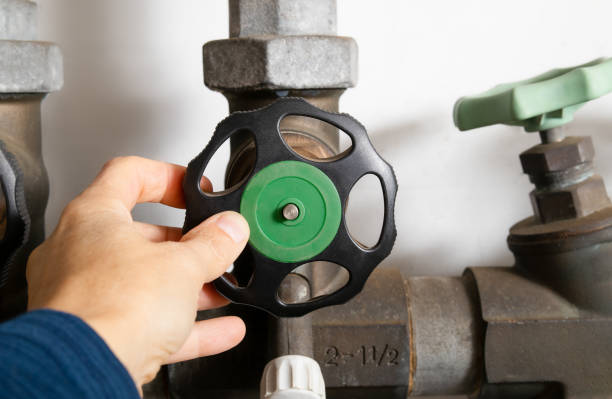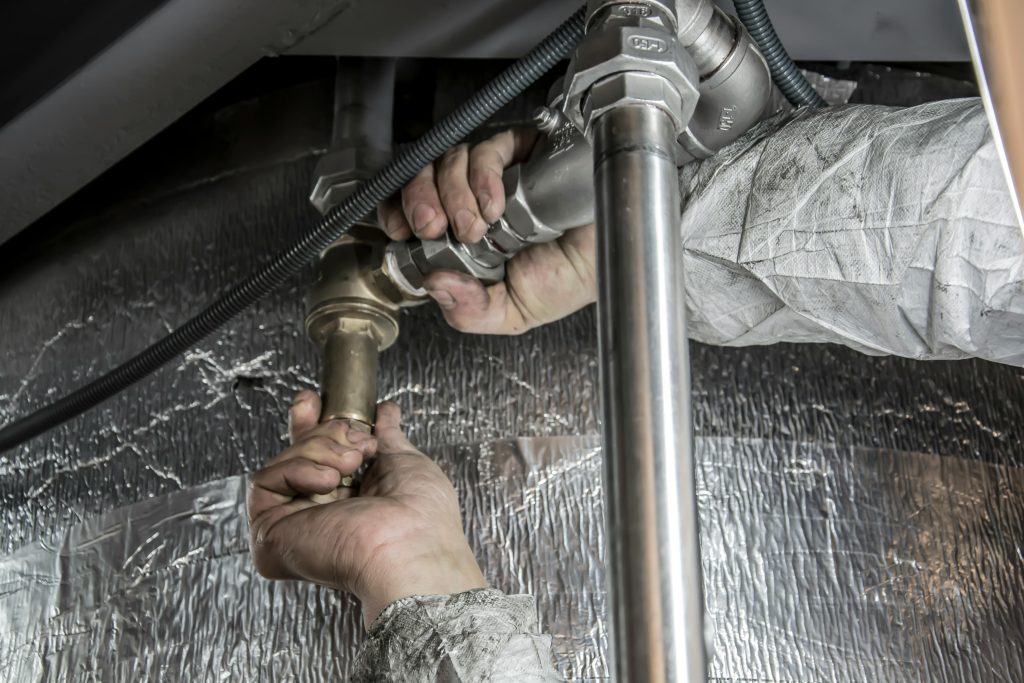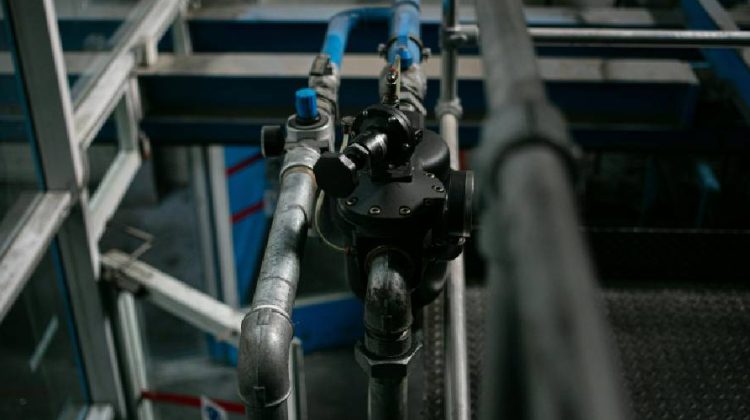Introduction: What Is a Backwater Valve?
Imagine it’s a stormy Edmonton evening. Rain’s hammering the pavement, wind’s howling, and you’re curled up inside with a cozy blanket and Netflix. Suddenly… your basement floor drain starts bubbling. 😬
Next thing you know, raw sewage is backing up into your home. Gross? Absolutely. Preventable? Definitely.
That’s where a backwater valve becomes your home’s secret weapon.
A backwater valve (sometimes called a backflow prevention valve) is a small but mighty device installed in your home’s main sewer line. It allows wastewater to flow out, but slams shut if it tries to flow back in. Like a one-way street for sewage.
Why Backwater Valves Matter in Edmonton
Here’s the thing about Edmonton:
- We get heavy rainfalls, especially in spring and summer.
- Snowmelt can overwhelm city sewer systems.
- Older neighborhoods often share combined sewer lines—stormwater and sewage flow through the same system.
When those systems back up, wastewater can surge back toward homes. Without a backwater valve, your basement is first in line for a very unpleasant surprise.
What Happens WITHOUT a Backwater Valve?

If you don’t have one installed, here’s what you’re risking:
1. 💩 Sewage Backup Into Your Basement
We’re not just talking water—this is dirty, contaminated waste. It destroys drywall, flooring, furniture, and often leads to mold.
Average repair cost? Between $6,000–$20,000, depending on damage.
2. 🧾 Home Insurance Headaches
Many insurers require a backwater valve before they’ll cover water damage claims.
No valve? You could get denied—or hit with much higher premiums.
3. 💸 Property Value Hits
Home inspectors flag missing backwater valves, especially in flood-prone zones.
Buyers get cold feet if they know the basement could turn into a sewer pond.
What a Backwater Valve Looks Like (and How It Works)
It’s not flashy—it’s usually a small plastic or PVC fitting with a clear lid. Inside, a flap swings freely in one direction to let waste out. When flow reverses, the flap shuts tight to prevent backup.

You’ll usually find it:
- Near the front of the home
- In the basement floor (or even outside)
- With a removable lid for inspections
How Do You Know If You Need a BackWater Valve?
Here’s the reality: If your home has a basement and a sewer connection, you need one.
But more specifically, if you answer yes to any of the following:
- Live in an area with frequent heavy rain?
- Had sewer backups in your neighborhood?
- Own a home built before the 1980s?
- Basement fixtures lower than street level?
Then yes, you’re at risk—and a backwater valve should be high on your plumbing to-do list.
A Real Edmonton Example: Disaster Averted
One of our clients in North Edmonton called Go 2 Plumbing and Heating after experiencing two backups in 18 months. The second time, sewage flooded their basement laundry room during a June storm.
They finally said, “Enough is enough.” We installed a backwater valve—and guess what?
The next time a thunderstorm hit and sewers backed up, their valve sealed shut and protected the entire basement.
Crisis avoided. Problem solved. And they haven’t had a drop of trouble since. 🙌
Installation: What to Expect
At Go 2 Plumbing and Heating, we make it easy:
1. Site Assessment
We inspect your existing system, figure out the best location, and check for any code issues.
2. Dig & Install
We carefully excavate, cut into the sewer line, and install the valve securely. It usually takes a half day to full day.
3. Permit & Inspection
In Edmonton, permits are required. No worries—we handle all that paperwork for you.
4. Post-Install Education
We show you how to inspect and maintain the valve (you should check it once or twice a year).
How Much Does a BackWater Valve Cost?
Installation typically costs between $1,200 to $2,500, depending on your home’s layout and accessibility.
But compare that to the $10,000+ price tag of a sewer cleanup, and it’s honestly a no-brainer.
👉 Pro Tip: The City of Edmonton offers a Backwater Valve Subsidy that could cover part of your cost. Ask us about it—we’re happy to help with applications.
24/7 Protection from the Pros 🛠️
At Go 2 Plumbing and Heating, we know plumbing emergencies don’t stick to a 9-to-5 schedule. Unlike typical Edmonton plumbers, we offer 24-hour emergency plumbing services—because trouble loves to strike at 2 a.m.
We handle:
- ✅ Backwater valve installations
- ✅ Drain cleaning and sewer camera inspections
- ✅ Tankless water heater installs
- ✅ Full residential and commercial plumbing services
Whether it’s preventive plumbing or midnight mayhem—we’ve got your back.
Take Action Before the Next Storm Hits
If your home doesn’t have a backwater valve, it’s not a matter of if you’ll get a sewage backup—it’s when.
Don’t wait until you’re ankle-deep in regret. Take the smart route and protect your home (and your nose!) from disaster.
🎯 Book your free assessment today with Edmonton’s most reliable plumbing pros:
📍 https://www.go2plumbers.ca/contact-us/
📞 Or call us anytime: 780-850-8817

